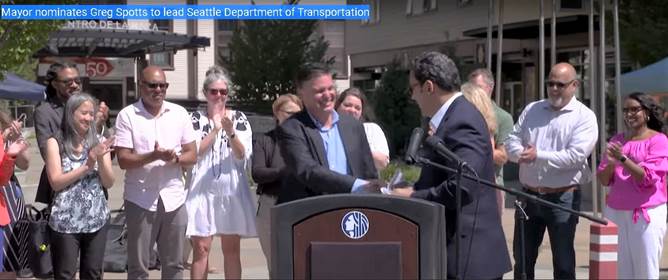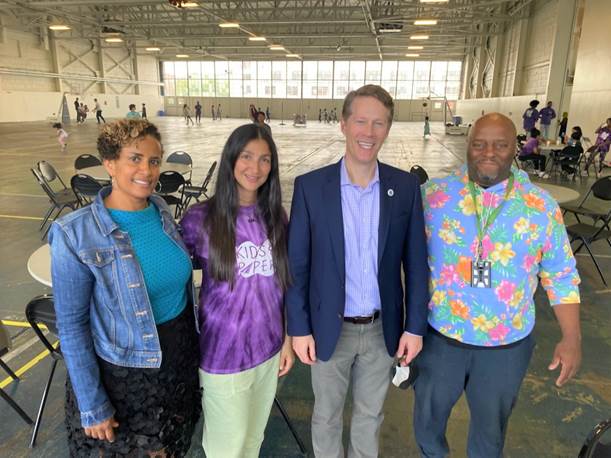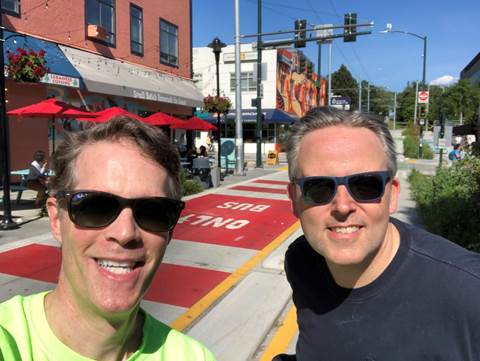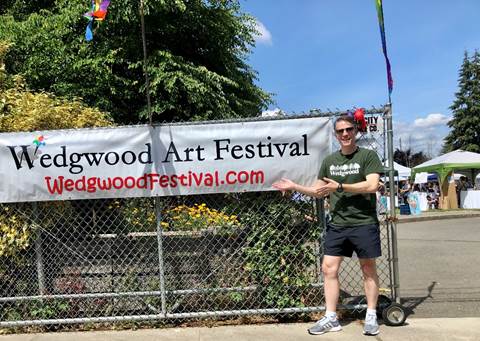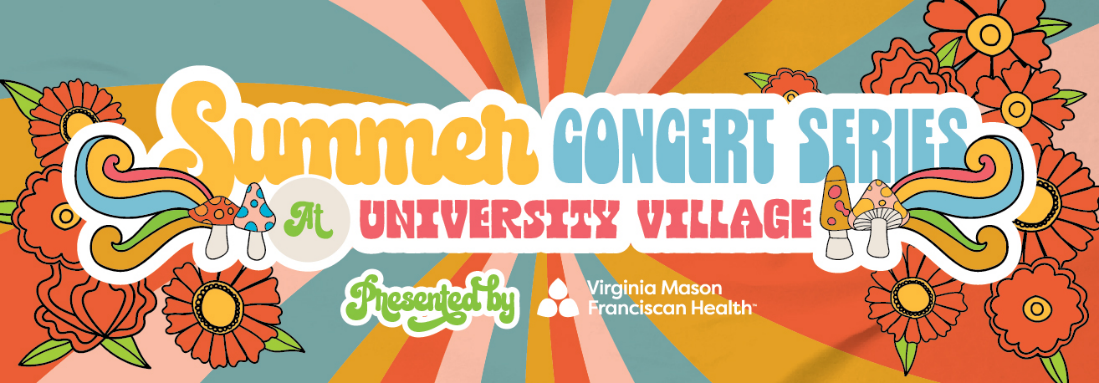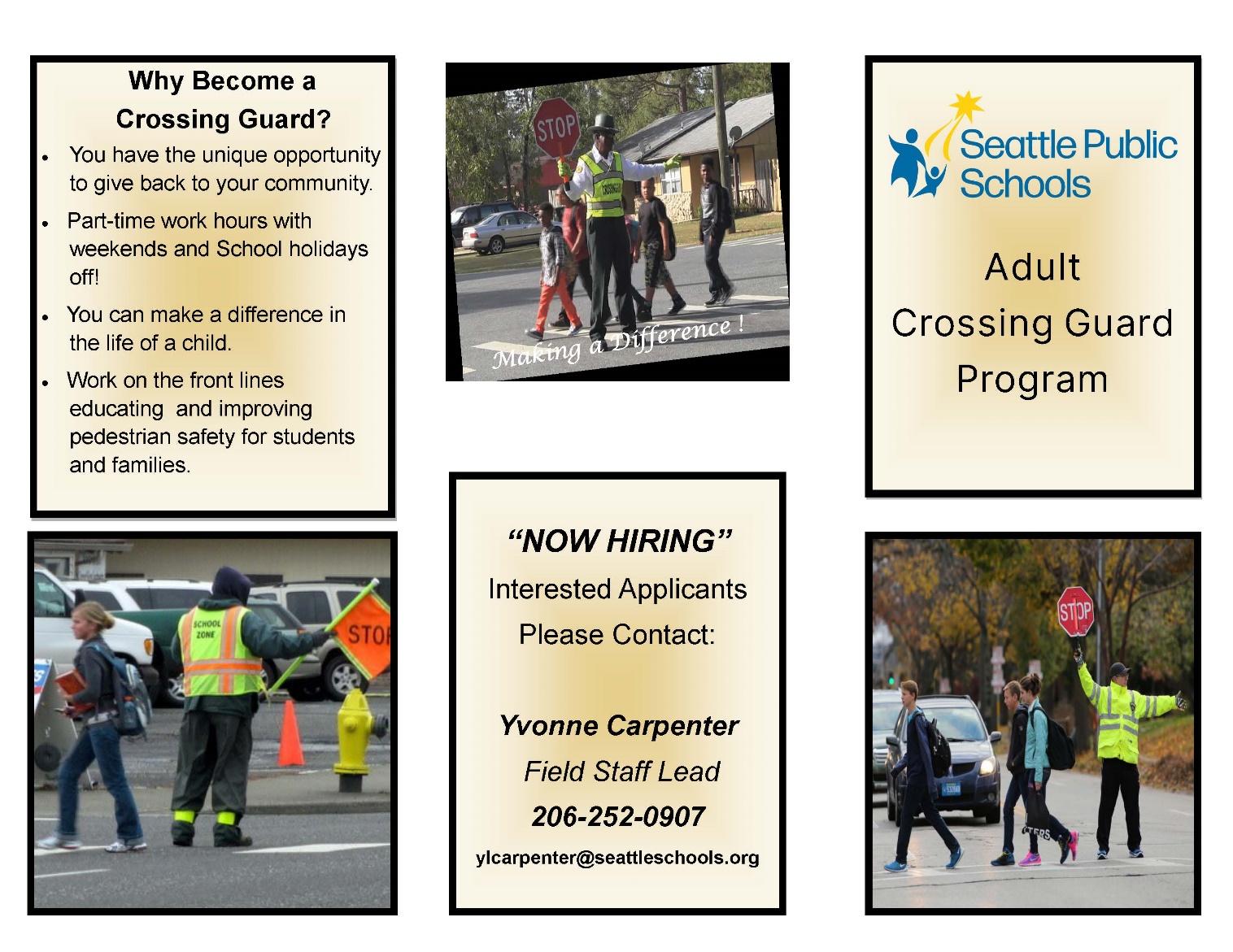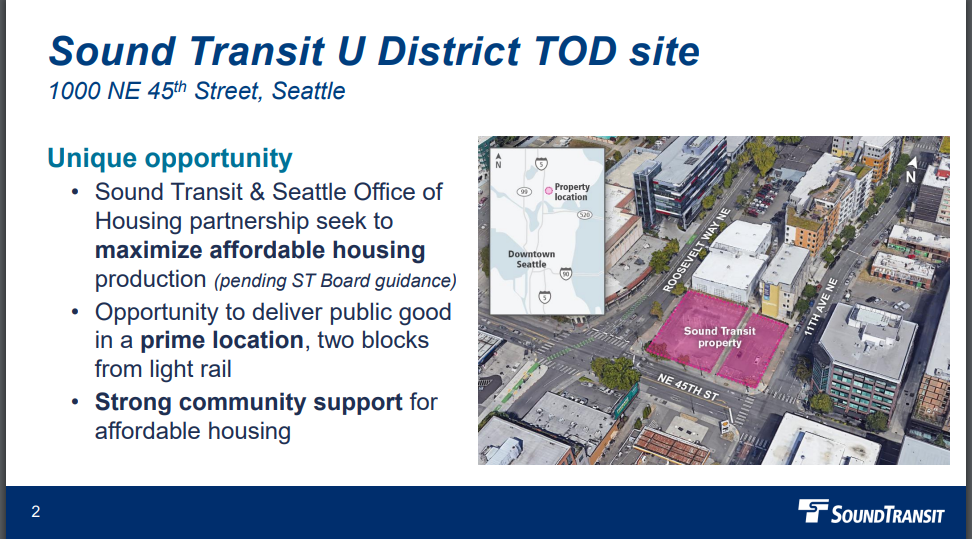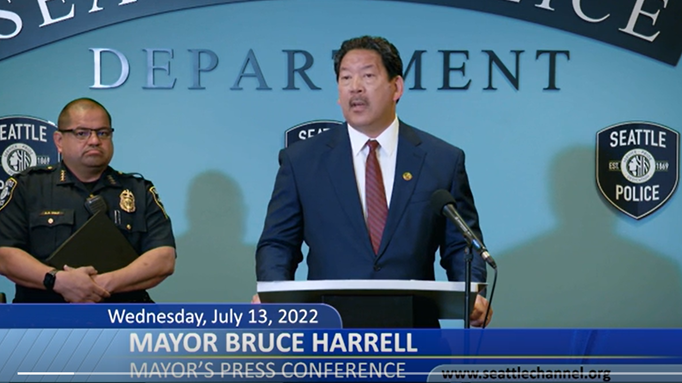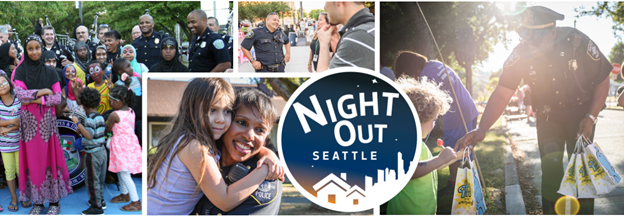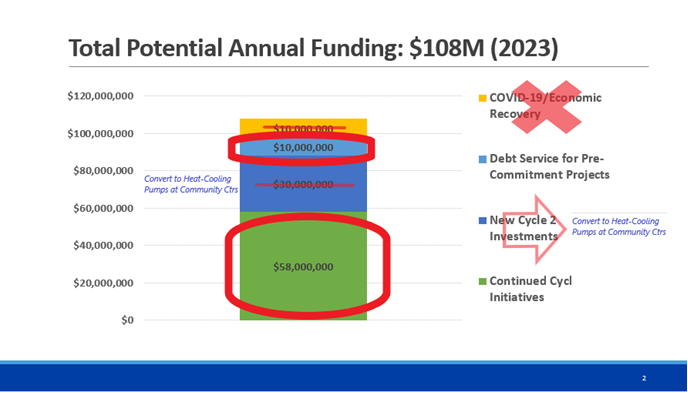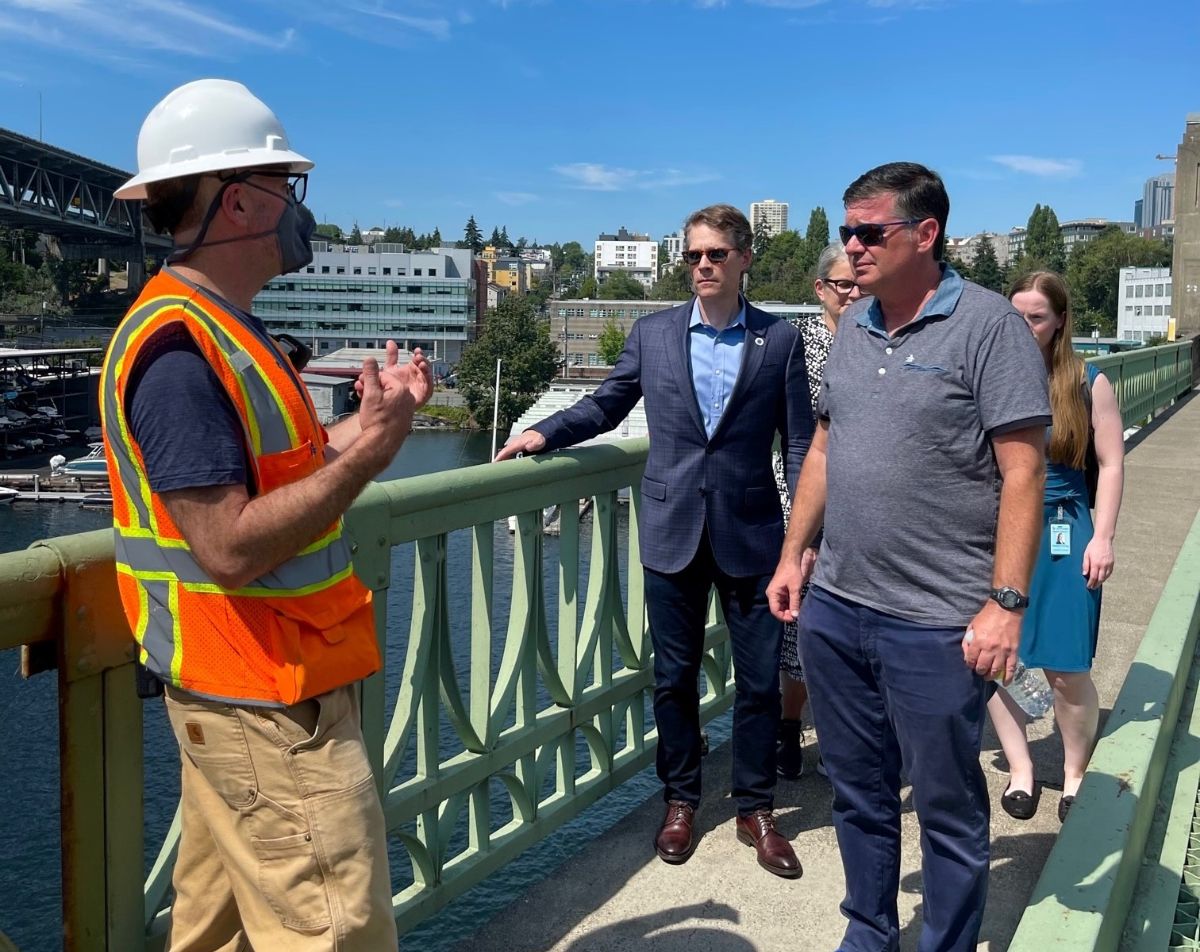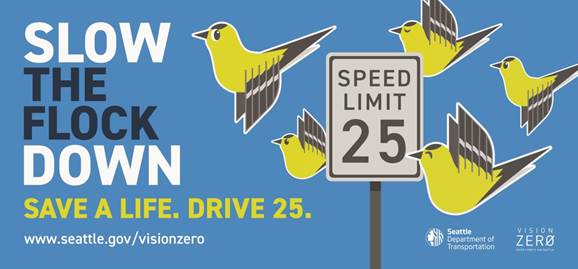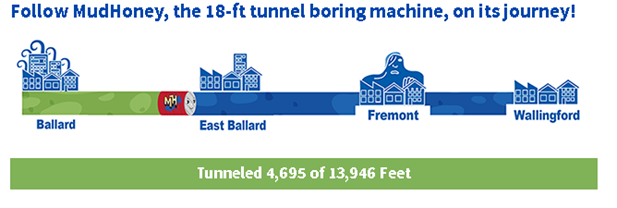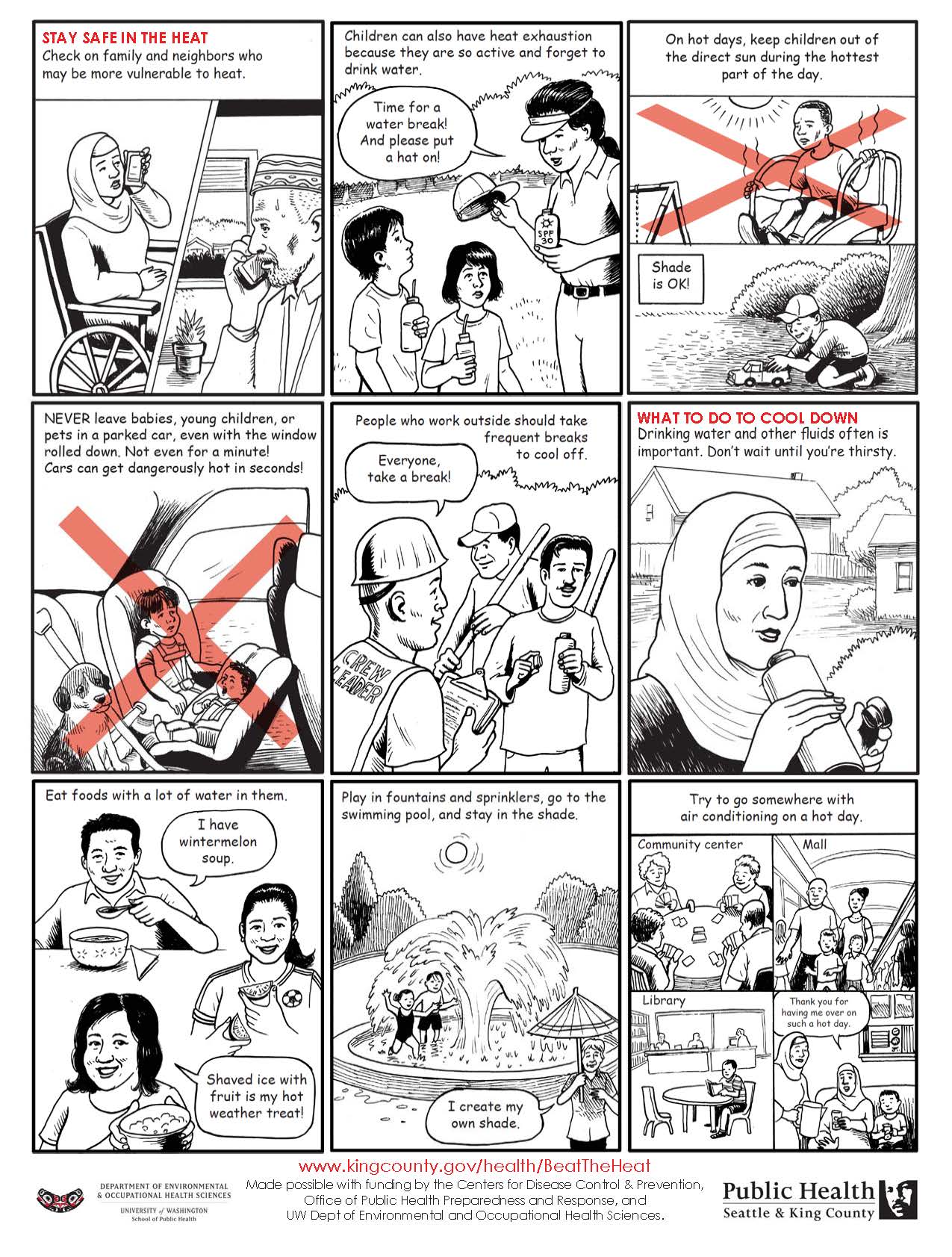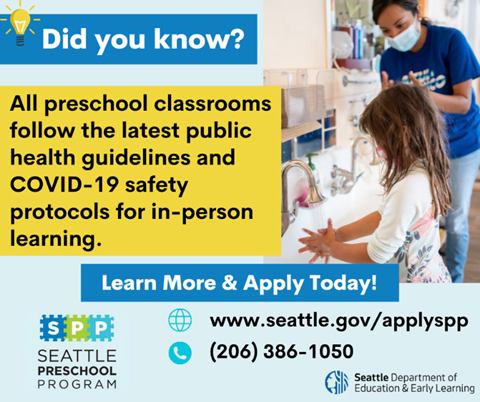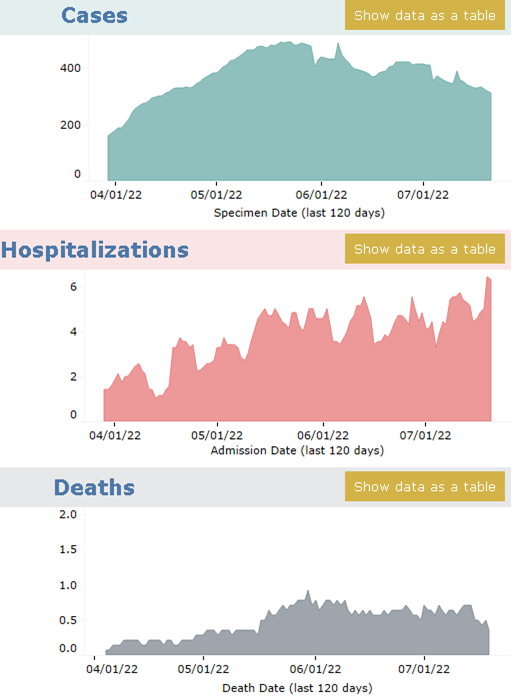Safety and more in July
Friends and Neighbors,
Safety has been a theme for July. The need for safety in our communities and safety in our parks. Safety for women seeking health care. Safety from the heat waves of climate change. Safety for Seattle’s aging bridges and safety for neighbors simply trying to cross the street.
Mayor Bruce Harrell on July 27, 2022 nominating Gregory Spotts to be the next Director of the Seattle Department of Transportation (SDOT). The safety of our streets, bridges, and sidewalks will need to be a major focus on the new director. The committee chaired by Councilmember Alex Pedersen will handle the confirmation process. You can see more info in the Transportation section of this newsletter…
In this month’s newsletter…
- District 4: Engaging in Magnuson Park, the U District, View Ridge, Wallingford, Wedgwood, and more. You can support neighborhood restaurants by urging “Yes” votes to continue the 15% cap on delivery fees.
- Homelessness: planning for new low-income housing.
- Public Safety: recruitment plan and National Night Out.
- Take the Survey: Should Seattle ban gas-powered leaf blowers?
- Budgets and Taxes: The latest on proposals to double the portion of property tax for Parks District.
- Transportation & Seattle Public Utilities Committee: new SDOT Director nominated, reducing pedestrian fatalities, mega project to protect our waterways, electric bills, and more.
- Public Health and Preschool Updates: beating the heat, Seattle preschool, and COVID stats.
- Ways to Provide Input
DISTRICT 4
Fun Program for Low-Income Immigrant Children at Magnuson Park
(from left to right in photo) Mayor Harrell’s Chief Equity Officer Adiam Emery, the Executive Director of “Kids & Paper” Azadeh Eslamy, Councilmember Alex Pedersen, and Parks & Rec coordinator Paul Davenport attend the first anniversary of the nonprofit serving elementary school age immigrant children at Magnuson Park.
During our budget deliberations in November 2021, I persuaded our Budget Committee to add a modest investment for a nonprofit that would serve an underserved population after school and then expand during the summer months at Magnuson Park. As you may know, 850 low-income neighbors reside at the apartments inside Magnuson Park, including 350 children. While there is an early childhood education center and some youth programming, there is not as much available for elementary school children – particularly those kids who reside at the low-income housing within Magnuson Park.
When evaluating programs for public investment, I typically prefer to expand or replicate proven existing programs rather than fund something new. But the persistent gap of services, the delayed renovation of their community center, and the uncertainty of COVID persuaded me to facilitate seed funding for a new nonprofit serving immigrant children. Our City Parks Department manages the contract with “Kids & Paper” and reports positive results thus far.
Earlier this month, I attended their first “anniversary” celebration with dozens of children from various backgrounds playing games and having fun together. This summer, 88% of the 60 children enrolled in the program reside in the low-income housing within Magnuson Park. The program is limited by how many staff they need to provide an appropriate ratio supervising the children. I’m hopeful the Harrell Administration will choose to continue the program in the budget proposal the executive branch submits to the City Council in September for the next calendar year. For more information about the nonprofit Kids & Paper, CLICK HERE.
University District
Councilmember Pedersen and Don Blakeney, the Executive Director of the Business Improvement Area’s nonprofit program manager (U District Partnership), got their Sunday afternoon exercise exploring the changing streets throughout the heart of District 4, including the recent opening of NE 43rd Street to buses for better, direct connections to the light rail. Later in July, Councilmember Pedersen attended the board meeting of the U District Partnership to discuss public safety, homelessness, transportation, alley garbage problems, and the City budget.
Protecting Diverse Restaurants in D4 and throughout Seattle: Capping Delivery Fees
Our district is proud of its diverse restaurants serving delicious food from several neighborhood business districts including Eastlake, Ravenna, Roosevelt, Wallingford, Wedgwood, and, of course the U District.
To protect our struggling, local restaurants from a financial cliff, I co-sponsored legislation with Councilmember Dan Strauss to make permanent the 15% cap on fees that delivery corporations charge to Seattle restaurants. That cap on delivery fees has demonstrated its importance to local restaurants as part of a Civil Emergency Order for the past couple of years, but it will end as soon as the Mayor ends the Civil Emergency – unless we take action. We need your support – click on the button below to help.
I understand that this legislation has the local government inserting itself into the private marketplace and so this must be done carefully and to benefit the public. Here are some additional considerations: This key point of the legislation has already been tested – the 15% cap has been in place for over two years. Moreover, we added an “opt out” provision that provides additional flexibility for both parties. There are hundreds of local restaurants employing and serving thousands of our neighbors here in Seattle and there are just three large delivery corporations all headquartered out of state. For additional rationale, see the multiple findings articulated in the legislation (Council Bill 120379).
I’d like to thank citywide Councilmember Sara Nelson for making room at her Economic Development Committee this month to discuss and vote on the legislation. Good news: This small business legislation passed unanimously out of her committee on July 27. I look forward to the entire City Council and Mayor enacting this legislation as soon as possible, so that Seattle’s diverse local restaurants can be free from the fear of fees to focus on fantastic food.
For my statement on the legislation, CLICK HERE.
CLICK to Urge “Yes” Vote for Seattle Restaurants
Wedgwood Arts Festival: It’s Back!
The annual Wedgwood Arts Festival was back in its full glory this month and Councilmember Pedersen (sporting his vintage “Wedgwood” T-shirt) had fun attending the community event with one of his children. They arrived with the goal of buying a piece of art, but departed with other goodies from local artists including handmade jewelry, clothes, and a candle that smells like winter holiday spices. To see what you might have missed and to get it early on your calendar for next summer, you can visit their website at wedgwoodfestival.com. Regrets: not buying a homemade ice cream sandwich.
Speaking of Wedgwood…
Redevelopment Plans for Wedgwood Shopping Center
As mentioned in the June 29, 2022 edition of the Daily Journal of Commerce and discussed recently at the Wedgwood Community Council, the Wedgwood shopping center on the southeast corner of 35th Ave NE and 85th Street (you know, home to the Broiler and Van Gough Coffee) is likely to be redeveloped. Normally, I would not comment on a potential purchase in the middle of its due diligence period, but it was already reported in the media — so here’s an excerpt from the article:
“The 2-acre North Seattle property, owned by an area family, hasn’t traded in decades…Now, with architect Solomon Cordwell Buenz, prospective buyer Security Properties has filed an early redevelopment plan. The proposal hasn’t yet entered design review. It describes a midrise apartment building with 280 units over retail/commercial space. The latter would have 34,500 square feet for an unnamed grocer on the north corner, at North 85th Street. On the south corner, North 82nd Street, would be another 14,000 square feet of commercial space. Five stories seems likely for a site that’s zoned up to 55 feet. Security Properties has ample experience with similar midrise projects like the planned Magnolia Albertsons redo, and past Fremont PCC and apartments…Security Properties says it would like to retain current tenants in the new development.”
I have reached out to Security Properties to encourage them to conduct a robust community engagement process. Security Properties is a highly experienced developer/owner, based in Seattle, but with a national footprint owning an array of multifamily housing and mixed-use developments. They have already reached out to the existing commercial tenants there and want to bring back a grocery store if they proceed to redevelop that important site.
If you want to stay up to speed on this development and/or provide input, I recommend participating in the Wedgwood Community Council: https://www.wedgwoodcc.org/getinvolved/
Wallingford Farmers Market
Councilmember Pedersen visited the Wallingford Farmers Market this month, where he enjoyed a coveted strawberries & cream popsicle from Seattle Pops, which also has a storefront on N 45th Street at Interlake Ave N. The Councilmember is seen here demonstrating his acquired political skill of chewing and smiling at the same time. The Wallingford Farmers Market, held adjacent to the Meridian Playground, is open every Wednesday from 5-8 p.m. through September 28.
Restoring Historic Landmark in U District: Thank goodness it’s not another bank!
In her landmark critique of urban planning, “The Death and Life of American Cities,” Jane Jacobs explained in great detail the necessity of historic buildings for a vibrant city. In her chapter entitled “The generators of diversity,” Jacobs writes, “The district must mingle buildings that vary in age and condition, including a good proportion of old ones…” (page 150). Then she devotes an entire chapter to this called “The need for aged buildings” in which she writes, “Cities need old buildings so badly it is probably impossible for vigorous streets and districts to grow without them” (page 187). One of the reasons is that older buildings typically have less debt to pay off and lower taxes and can charge lower rent than upzoned or brand-new buildings. That then enables small businesses who need cheaper rent to offer eclectic products and services (think Gargoyle Statuary on The Ave) without needing the economies of scale of chain stores, fast food, or banks. Jane Jacobs articulates it better: “Chain stores, chain restaurants and banks go into new construction…Perhaps more significant, hundreds of ordinary enterprises, necessary to the safety and public life of streets and neighborhoods, and appreciated for their convenience and personal quality, can make out successfully in old buildings, but are inexorably slain by the high overhead of new construction” (page 188).
Earlier this month, I joined the University District Partnership, University of Washington, and Historic Seattle to celebrate the completed historic renovation of the 110-year old iconic building on the corner of NE 45th Street and “The Ave” in the heart of the U District. This newly renovated interior space with its exterior façade beautifully restored for the next 100 years is going to be occupied by an additional location of the Seattle Bouldering Project. This small business with rock-climbing and fitness classes will bring lots of foot traffic and will energize that key corner of the U District that has been partially dormant during the pandemic. Making sure some historic buildings are intermingled with the new construction is important to generate the building diversity that creates vitality and sense of place in that Urban Center. Thank goodness, it’s not just another bank branch.
U Village Summer Concerts
Enjoy free music outdoors at U Village on August Wednesdays 7:00 p.m. to 8:30 p.m., August 3 (Nite Wave), August 10 (Kalimba: Spirit of Earth Wind Fire), and August 17 (Hit Explosion). For more information, CLICK HERE.
View Ridge Elementary Crossing Guard – 2nd Position Available
Thanks to advocacy from parents, school officials, and community leaders, View Ridge Elementary School is poised to get a 2nd crossing guard because we know neighborhood kids walk to school from multiple directions. The Seattle Public School system has to work hard to recruit and retain school crossing guards, so we’re spreading the news here: They’re hiring!
New Low-Income Housing Near Light Rail in the Heart of District 4
Last week, our Committee discussed a petition from Sound Transit asking the City of Seattle to vacate a portion of an alley in the University District, which is in the heart of my Council District. As you may recall, we successfully arranged to have Sound Transit generously lease their land to the City for a couple of years to create a 35-unit Tiny Home Village, called Rosie’s Village, at the corner of NE 45th Street and Roosevelt Way NE. As has always been the ultimate goal for that site, we want to build lots of permanent low-income housing. My hope is that we will maximize the number of units at the deepest affordability levels. Ideally, all the future units will, on average, serve households earning less than 60% of area median income with at least 35 of the units set aside for extremely low income residents at risk of homelessness (at 0% to 30% AMI). My preliminary view is that I agree with Sound Transit that vacating a portion of that alley could enable a nonprofit housing developer to build more units of low-income housing there.
After the upzones of the University District by a previous City Council, we have seen demolitions of naturally occurring affordable housing and nearly all developers opting out of building affordable housing in the neighborhood. Demolitions directly displace our neighbors. Instead of providing the affordable housing onsite, they have written a check to pay an in-lieu fee that the City uses to fund different projects 3 years later somewhere else, which is not ideal. Here we have a parcel we can use to build low-income housing near the new light rail station, and we can build more of it by vacating part of our alley without impacting emergency vehicles. The presentation earlier this month was just a pre-view of Sound Transit’s petition; it would be at a later meeting when we would impose our public benefit requirements in exchange for allowing a partial vacating of the alley.
- For the petition materials asking the City to vacate part of that alley, CLICK HERE.
- For the presentation at our committee, CLICK HERE.
- To see Mayor’s Harrell’s Homelessness Action Plan website, CLICK HERE.
PUBLIC SAFETY
Supporting Mayor Harrell’s Plan to Recruit and Restore Police Staffing
I support Mayor Harrell’s plan to recruit officers. Everyone deserves to feel safe, and I appreciate that we need a holistic approach that includes not only sufficient staffing of frontline public safety workers, but also alternative emergency responses for mental health crises and a police contract that expands reforms.
On September 10th of last year — 10 months ago – I introduced two budget amendments to fund between $1 million and $3 million dollars for SPD recruitment and retention but, unfortunately, only 3 of my colleagues supported it. Since that time, we’ve received more recent data showing unacceptable increases in 9-1-1 response times and unacceptable increases in crime. So I’m hopeful the Mayor’s recruitment incentives will pass next month.
A remarkable and positive point made in the mayor’s plan: “As of May 2022, the number of trained and deployable officers — just 954 — is the lowest in over 30 years…Mayor Bruce Harrell’s goal is to increase the number of Seattle police officers who are authorized, funded, fully trained, and deployable to 1,450…”
More than 400 officers and detectives have left the department since January 2020 so, while I’m glad to see a boost for recruitment, I believe we also need to RETAIN the highly trained professionals ALREADY here in Seattle. I recently attended several “roll calls” at the beginning of police patrol shifts to hear from many of the officers who keep North Seattle safe. I appreciate the good work that they do and know it takes a long time to train and deploy new recruits.
I look forward to deliberating with my colleagues on the Mayor’s new legislation to address the staffing crisis at SPD.
- For Mayor Harrell’s Recruitment Plan, CLICK HERE and HERE.
- For the video of the Mayor making his announcement and answering questions, CLICK HERE.
- For the Response Time Report for 1st Quarter 2022, CLICK HERE.
- To apply to be a Seattle police officer, CLICK HERE.
- For the Seattle Times July 22 editorial entitled, “It’s OK to say we’re funding the police,” CLICK HERE.
National Night Out
“Night Out” is a national event held on Tuesday evening, August 2, 2022, for neighbors to enjoy time together on side streets in their community and to connect and share food while heightening crime prevention awareness. To register your block for the event or to find an event near you for National Night Out, CLICK HERE.
Last year I visited several of these neighborhood block parties and I’ll be out there again Tuesday night. Thanks to all neighborhood leaders who are organizing an event on their block so neighbors can get to know each other again. This long-standing tradition is consistent with the fresh spirit of “One Seattle.”
For more immediate crime prevention needs, contact a Crime Prevention Coordinator by CLICKING HERE. I worked hard to secure funding for two Crime Prevention Coordinators in North Seattle: Sarah and Katelyn are already hired and ready to meet with you to share crime prevention tips.
TAKE THE SURVEY
Instructions: Click below to answer the one-question survey!
I want your feedback on leaf blowers — and I want to be transparent about my preliminary view. A couple of years ago, I indicated a strong interest in exploring ways to phase out harmful, gas-powered leaf blowers. Addressing the harms of gas-powered leaf blowers has been supported by environmental organizations, including 350 Seattle. The pandemic and other priorities interrupted those plans, but the problems persist. Loud and dirty gas-powered leaf blowers cause air pollution and noise pollution that can harm the workers who use them as well as the people and animals nearby. Recently, my office has thoroughly researched this issue. While public safety and homelessness must continue as priority issues, I believe City Hall also has the bandwidth to address this public health and environmental issue and city government should lead by example. While it was reasonable to push this issue to the back burner during the pandemic, other cities have recently been leap-frogging Seattle by banning these harmful devices, including Washington D.C., California, and 100 other jurisdictions. Electric leaf blowers are much stronger than they used to be and there should be opportunities at City parks to reduce when and where we use leaf blowers because leaves can also decompose naturally. I’m interested in introducing a City Council Resolution to address this topic and I’m pleased to report that the environmental organization 350 Seattle officially endorsed this effort. Stay tuned.
Take the Survey
Parks: Some City Officials Want to Double The Portion of Your Property Tax That Supplements Parks
We are eagerly awaiting the mayor’s proposal for how much the executive branch of city government wants us to reinvest in Seattle’s parks. The current proposal from the Parks Department is to double the portion of your property taxes that goes toward the Parks District and I have concerns about such a steep increase. I believe we all want our parks to be safe, clean, and open, but I don’t think you should have to double what you pay to achieve what should be a baseline condition of your parks. I edited the bar graph above to visualize what a more modest increase might include.
Here are my comments at Parks District Committee on July 25, 2022:
“Thank you, President Lewis, for the opportunity to speak to these items to support our parks and community centers and for your leadership in moving this forward. And thanks to our City Council Central Staff for pulling together these various ideas that focus on the “Parks District” source of funding, which comprises approximately 20% of the budget for the Parks & Recreation Department.
As I’ve mentioned at previous meetings, I’m concerned about the proposal to double the Parks District portion of property tax bills across the City. Increases in property taxes, as we know, can be passed along to renters and we have several additional property tax levies coming including increases for affordable housing, transportation, and education.
So, for parks, I would support a reasonable “back-to-the-basics” proposal that includes 3 main investments: existing programs, new projects we’ve already committed to, and retrofitting some community centers with environmentally friendly heating & cooling pumps to address heat waves. Councilmember Herbold and I recently secured funding for similar building upgrades at a West Seattle library and a library in my District in Northeast Seattle and I support doing that for more community centers, as President Lewis spoke to earlier today. Perhaps the renovating of community centers to serve as cooling centers during heat waves could be added to the bonding capacity of the pre-commitment projects.
My modest proposal would increase Parks District funding from today’s $56 million to approximately $70 million ($2 million for inflation + $10 million for pre-commitment + $2 million for heat/cooling pumps). That’s a generous 25% increase instead of the 100% increase proposed by the Parks Department. [As I understand it, the Parks District comprises 20% of the Parks Department’s total budget.] So my hope would be to enhance existing investments for parks & community centers in a reasonable way that doesn’t break the bank for homeowners AND renters, especially residents on fixed incomes and struggling small businesses renting their storefronts on triple net leases because they pay for those tax increases, too. Thank you.”
— Councilmember Alex Pedersen
- For the agenda and presentations at the July 25, 2022 meeting, CLICK HERE.
- For the main website of the Parks District, CLICK HERE.
- For a recent Seattle Times editorial lamenting the unfulfilled promise to maintain our parks entitled “Seattle parks maintenance has gone down the toilet,” CLICK HERE.
- [ADDENDUM from Sept 6, 2022: For Mayor Harrell’s transmittal and appendices for his Parks District tax-spend plan, CLICK HERE. As stated previously, the current Parks District amount is approximately $56 million. The Mayor is proposing $115 million per year for the Parks District, which is slightly more than the $108 million originally proposed by the Parks Department / Park District Commissioners. If adopted by the City Council, the Mayor’s proposal would essentially double that portion of your current property taxes.]
Technology Matching Funds Awarded, But Not The Full Amount Authorized by Council
On July 20, 2022, Seattle’s Information Technology Department announced winners for the City’s Technology Matching Fund.
As part of the budget proposal for 2023 that we’ll discuss and approve this Fall, I’m hoping City Hall doubles down on efforts to achieve digital equity. Due to their initial prediction of a deficit in our city government’s flexible “General Fund,” our City’s Budget Office chose not to fund $250,000 of the amount Council approved in November 2021 for spending in 2022. With the higher-than-expected revenues from other sources, I hope the executive branch decides to invest those funds later this year to increase access to and adoption of reliable, high-speed internet. (Your City Council has the authority to authorize funding, but the executive can choose not to spend it.)
In a city that prides itself in leading the world in technology, the COVID crisis laid bare the inequities and injustice of the digital divide. In our high-tech city, we should no longer allow limited internet access to prevent learning, to impede our workers, or to hinder our small businesses and nonprofits. As called for by our City’s bold “Internet for All” Action Plan, it’s time to ensure reliable and affordable access to the internet as part of our city’s vital infrastructure for social justice, for education, and for economic development. It’s time to put the plan into action — and that requires dollars from City Hall and accommodations from the private sector.
- For the initial winners from 2022, CLICK HERE.
- For Seattle ITs digital equity website, CLICK HERE.
TRANSPORTATION & SEATTLE PUBLIC UTILITIES COMMITTEE
(This is the Committee currently chaired by Councilmember Pedersen, so we provide extra information on its issues.)
New Director Nominated for SDOT
Matt Donahue, Seattle’s Director of Roadway Structures, discusses the University Bridge’s condition with Councilmember Pedersen and Gregory Spotts, Mayor Bruce Harrell’s nominee to become the next Director of the Seattle Department of Transportation (SDOT). This multimodal bridge ranked “poor” by the 2020 audit of Seattle’s bridges.
Earlier this week on the aging University Bridge, I met with Gregory Spotts, Mayor Harrell’s nominee to serve as the permanent Director of the Seattle Department of Transportation (SDOT). I urged him to focus on safety, primarily pedestrian safety and bridge safety. Here is the statement I included in the Mayor’s July 27, 2022 press release:
“The Mayor’s nomination to lead and manage the Seattle Department of Transportation, its $700 million budget, and its 1,000 employees will dramatically shape how people and freight travel throughout our city safely and efficiently as we battle climate change,” said Councilmember Alex Pedersen (District 4, Northeast Seattle). “As Transportation Chair for the legislative branch of city government, I will conduct a thorough and transparent process for this important nomination. Together, we will follow the methodical confirmation process outlined in Seattle Resolution 31868. Seattle deserves a department director with a balanced and practical approach to urban transportation as well as a focus on safety and mobility that includes fixing our city’s aging bridges. When I combine my confidence in the Mayor and his search committee with this nominee’s impressive credentials, I believe we can have a positive confirmation process to keep our city moving forward.”
Adding to that statement, I’d like Seattle’s new Director of Transportation to focus on safety and competence: Safety for pedestrians and safety for our aging bridges that connect our communities. And competence — to deliver transportation projects on time and under budget, such as the bridge seismic upgrades promised to voters several years ago. Competence also includes a balanced approach to transportation systems, boosting transit that moves the most people in the most environmentally friendly way and facilitating freight that keeps our economy moving as we emerge from the pandemic. These issues will be harmonized in the upcoming Seattle Transportation Plan.
I anticipate my Transportation Committee will consider the nominee during our meetings of August 16 and September 6, which means the City Council could approve him as early as September 13. The process for all nominees is outlined in Resolution 31868.
- For the mayor’s press release, CLICK HERE.
- For video of the mayor’s announcement and Mr. Spotts’ remarks, CLICK HERE.
- For a link to biographical information about Gregory Spotts, the Mayor’s nominee for SDOT Director, CLICK HERE.
Safety for Pedestrians and Bikes: Tour of High-Risk Locations in South Seattle
Councilmember Pedersen joined South Seattle Councilmember Tammy Morales, leaders from the Seattle Department of Transportation, and advocates for safe streets. They visited several locations as examples of dangerous intersections and arterials: 4th Ave South in SODO, the Lighthouse for the Blind, and the schools near Rainier Ave South & South Henderson Street.
Safety must be the priority for everyone using Seattle’s roads and, unfortunately, the first part of 2022 continues the disturbing national trend of unacceptably high numbers of traffic-related injuries and deaths, especially among pedestrians and people experiencing homelessness in South Seattle.
I wanted to thank Councilmember Morales and her team for organizing a visit earlier this month to South Seattle where, as Transportation Chair, I will continue to collaborate with her and our Seattle Department of Transportation (SDOT) to implement solutions that quickly prevent traffic collisions in high-risk areas where fatalities have occurred recently, especially among pedestrians. We visited several locations of recent and horrific collisions in South Seattle. As we heard in our Transportation Committee recently, the data demonstrate that South Seattle has suffered the brunt of traffic fatalities. I want to thank SDOT Director Kristen Simpson and the Mayor’s Office for joining us at these physical locations of recent traffic collisions – tragedies that have made it more challenging to reach the City’s goal of zero traffic fatalities and serious injuries by 2030.
Even though I represent Northeast Seattle, I serve as the chair of the Transportation Committee which views transportation systems citywide and, in some cases, regionally. Data shows that South Seattle suffers the most traffic-related fatalities and so I’d like to see more resources devoted there to increase safety.
While we have lowered speed limits and increased crosswalks, I believe we must also respond to the drop in police traffic enforcement by increasing use of speed cameras and fines based on each individual’s ability to pay. And we must reduce the traffic-related harms to people experiencing homelessness by having City departments re-double efforts to bring more people inside faster. While I’m hopeful the additional investments this City Council has directed to South Seattle for pedestrian safety will reduce injuries — once SDOT finishes those projects — initial 2022 data sounds the alarm. We are hoping the executive’s annual budget proposal, which the Council expects to see in 10 weeks, will include increased investments for pedestrian and bike safety in South Seattle and throughout our City. We cannot wait for a potential renewal of the $900 million Move Seattle property tax — voters might not even pass that measure, if they feel we have not kept the promises of the 2015 program and if their property taxes and rents are getting too high from the multitude of City government property tax increases. We need to address safety now within our existing budget – both pedestrian safety and bridge safety now — and we can do that by issuing bonds, if needed.
During the next week, SDOT attended the Seattle Freight Advisory Board to describe some potential safety improvements to one of these dangerous locations. For the Seattle Times article regarding improvements proposed for 4th Avenue S. near S. Massachusetts Street and S. Holgate Street in SODO, CLICK HERE.
- For remarks from Councilmember Morales (South Seattle) and me, CLICK HERE.
- For the June 21, 2022 Vision Zero presentation by SDOT, CLICK HERE.
- For SDOT’s Vision Zero website, CLICK HERE.
- For SDOT’s latest ad campaign to encourage drivers to slow down, CLICK HERE.
Ship Canal Water Quality Project update
Our committee received an update from Seattle Public Utilities on the Ship Canal Water Quality Project. As discussed earlier in our newsletters, this is a mega project that will improve our environment with a nearly 3-mile underground system to store polluted stormwater until it can be treated. So far, it’s on time and on budget, but the “confidence” in the budget estimate has dropped slightly due to inflationary pressures, the big boulder the drill ran into (but the drill won), and the proportion of construction contracts that still need to be finalized. Due to the size of the project, it’s already on the City Council’s “Watch List,” even though there are no substantive problems. In other words, we’re keeping a close eye on it.
- For the presentation at our Committee, CLICK HERE.
- For the project’s website and to sign up for special updates, CLICK HERE.
Seattle City Light: Why I Voted Against Increasing Your Bills Further
The Resolution from Seattle City Light that the City Council approved last year (Resolution 32007) planned the electricity rates to increase by 3.8% in 2023 and by another 3.8% in 2024. Unfortunately, City Light’s Resolution before us earlier this month (Resolution 32056) asked the Council to boost those rate increases more sharply: 4.5% in 2023 and by another 4.5% in 2024. While the average of increases Council has approved over a six-year period may appear steady, that’s only because future increases are typically estimates on the lower end (which brings down the average) — but when we actually get to those future years and you’re paying those bills, the actual rates in those years end up being higher.
While I appreciate all the hard work that City Light does and I appreciate the thoughtful rationale for that utility’s proposal, I voted No on that additional rate increase, which is consistent with my previous concerns regarding rate increases.
An increase from 3.8% to 4.5% for Seattle City Light calculates to about $10 million in additional annual revenue. While City Light is absorbing some of the inflationary costs, I believe a utility with a budget of over $1 billon could have absorbed the entire increase, rather than passing it onto ratepayers. This is important because utility rates are regressive and a government agency’s challenges with inflation or labor costs should not automatically become the burden of city residents and small businesses who are dealing with their own inflationary pressures. In addition, Northeast Seattle has experienced several electrical outages over the past couple of years and it’s not clear to me what the Strategic Plan will do differently to reduce outages, especially in light of the higher than expected rate increases. The Resolution passed anyway by a vote of 8 to 1.
Going forward, and during our review of the proposed City budget this Fall, I’m hoping to see all City agencies enhancing efforts to manage their costs, so that regressive taxes or fees are not automatically passed along to you. Unfortunately, King County Wastewater Treatment Division has been planning to pass along increased costs to us, which will show up on the bills from our other City-owned utility, Seattle Public Utilities. I will continue to raise concerns to King County officials about those costs as well, so that we can minimize the financial impact to residents and businesses throughout the region.
PUBLIC HEALTH and EDUCATION
Beat the Heat: Cooling Centers and Trees
Earlier this week, the temperature in Seattle climbed above 90 degrees for several days, a hot reminder of climate change and our need to stay cool, especially for the most vulnerable in our city. At my office’s request, the City’s Parks Department and Office of Emergency Management made sure Building 406 at Magnuson Park (formerly known as “The Brig”) is available as a cooling center as we still await the reopening of community centers in the area. Last fall, I secured funding for a cooling center at the Northeast branch of the Seattle Library and so I look forward to the Harrell Administration, City Budget Office, and library leadership proceeding expeditiously to upgrade that facility before the next unbearable heat wave.
The heat waves reinforce the urgency of passing legislation to protect our City’s dwindling tree canopy because trees help to cool communities and homes. The legislation we crafted to register tree cutters / arborists was just a small, first step. To more systematically protect our urban forest, we need to overhaul the weak comprehensive bill introduced by the Seattle Department of Construction & Inspection (SDCI) written during the Durkan Administration. For more on protecting trees, CLICK HERE.
For a Seattle Times article, “How to stay cool,” CLICK HERE.
For a current (July 2022) list of cooling centers from your City government including some libraries and some community centers, CLICK HERE.
Here is some information from Seattle-King County Public Health:
Enrollment Open for Seattle Preschool Program (SPP)
Parents in Seattle with 3- or 4-year-olds can apply now for the Seattle Preschool Program (SPP) 2022-2023 school year. SPP helps prepare children, regardless of income, to enter kindergarten with the skills they need to succeed. Research shows that children with high-quality early learning experiences have better academic and life outcomes; they’re more likely to have better grades, graduate, attend college, get a job, have higher lifetime wages, and have better mental and physical health.
- SPP is an investment in Seattle’s future, and we want as many families as possible to take advantage of the opportunity. Visit seattle.gov/applySPP for information on programs and to apply.
- Families who need in-language support to assist with the application process can call DEEL at 206-386-1050 or email preschool@seattle.gov.
- SPP provides full day programming (six hours), with extended-day care available at some sites.
- Classrooms have nationally recognized curricula, and some sites have specialized programs, including dual-language programs and inclusive classrooms for children with disabilities.
- Tuition is calculated on a sliding scale based on household income and family size; historically, most children qualify for free tuition.
- SPP is offered in partnership with community-based programs, family child care hubs, and Seattle Public Schools. Program sites are located throughout the city.
- SPP has received national recognition as one of the best public preschool programs in the United States by the National Institute for Early Education Research (NIEER) for five years running!
In 2013-2014, I was proud to collaborate with so many professionals to develop this evidence-based program under the leadership of Tim Burgess, approved by voters as a pilot program in November 2014, and greatly expanded by voters in November 2018. Rigorously evaluating this early learning program every year for its adherence to evidence-based (proven to work) parameters is the key to making sure preschoolers receive the high-quality, early learning promised to voters — because only high-quality benefits the kids.
COVID Case Update:
For the latest official data from King County Public Health, CLICK HERE or use this website: https://kingcounty.gov/depts/health/covid-19/data/daily-summary.aspx
(This snapshot was as of July 26, 2022 for the city of Seattle.)
- To register to receive the vaccine or booster in Seattle, CLICK HERE. Information is also available in Amharic, Chinese, Korean, Somali, Spanish, and Vietnamese.
- For the most recent information on combating COVID from King County Public Health, CLICK HERE.
- If you need language interpretation, help finding a vaccination or testing site, or ADA accommodation, call the King County COVID-19 Call Center at 206-477-3977, 8:00 a.m. to 7:00 p.m.
- For the latest COVID pandemic coverage from the Seattle Times, CLICK HERE.
WE WANT TO HEAR FROM YOU:
Ways to Provide Input

City Council Meetings on the Internet
Listening: Even though City Council is not currently holding meetings in person in order to follow public health guidelines, you can still follow along by listening on your computer or phone by CLICKING HERE. You can also listen on your phone by calling 253-215-8782.
NEW IN 2022: Our City Council meetings moved to Tuesdays at 2:00 p.m. Even after we return to in-person meetings, the public will still be able to call in their comments at City Council meetings – this is an important upgrade for public input. I would have supported moving our main Council meeting to the evenings to make it easier for people with day jobs to visit us, but the technological upgrades to enable calling in will still enable more of the public to participate even with meetings remaining in the daytime. We also updated our City Council Rules and parliamentary procedures in hopes of improving the efficiency of the City Council, including enabling Councilmembers to focus their work on city government business rather than international affairs.
Commenting: You can also submit public comment by sending an e-mail to me at Alex.Pedersen@seattle.gov or to all 9 Councilmembers at council@seattle.gov. Please remember to add “For City Council Meeting” in the comments. Now you can also phone in to the meeting to speak directly to the Council live. For the instructions on how to register and call in, CLICK HERE. Sign up begins two hours prior to the meeting start time.
Virtual Meetings with Your Councilmember Pedersen
I continue to schedule virtual in-district office hours, so we can chat by telephone or via Webex. Please continue to sign up through my website or by CLICKING HERE so I can hear your ideas, concerns, and requests. I hope to return to in-person office hours Friday afternoons before the end of the summer, probably at the Ravenna-Eckstein Community Center so that we are more centrally located and within walking distance of light rail and additional bus lines. You can also just send an e-mail to alex.pedersen@seattle.gov
For previous e-newsletters, visit my blog by CLICKING HERE.
We are getting through this together, Seattle!
With gratitude,

Councilmember Alex Pedersen
Seattle City Council, District 4
Email: Alex.Pedersen@seattle.gov
Phone: (206) 684-8804
Find It, Fix It
Posted: July 29th, 2022 under Councilmember Pedersen

